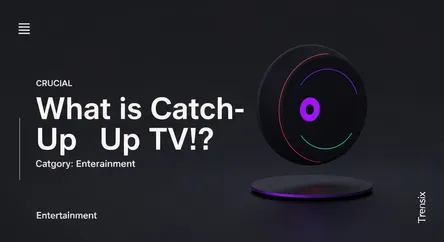Entertainment
What is Catch-Up TV?

Explore what catch-up TV is and how on-demand services are revolutionizing how we watch our favorite shows after they've aired.
What is it?
Catch-up TV, also known as replay TV, is a form of video on demand (VOD) that allows viewers to watch television programs for a limited period after their original broadcast. Unlike traditional linear TV which requires viewers to watch at a scheduled time, catch-up services, such as BBC iPlayer, ITVX, and Hulu, host episodes online shortly after they air. This technology allows audiences to access missed content at their convenience via smart TVs, computers, or mobile devices, effectively creating a personalized TV schedule for every user.
Why is it trending?
The trend of catch-up TV is driven by a demand for greater flexibility and control over media consumption. In today's fast-paced world, viewers' schedules often don't align with fixed broadcast times. Catch-up services cater to this by eliminating the 'appointment to view' model. The widespread availability of high-speed internet and the integration of these services into nearly every digital device have made it easier than ever to access content. This convenience has made catch-up TV an essential feature for broadcasters looking to retain audiences who are increasingly turning to on-demand platforms.
How does it affect people?
Catch-up TV has fundamentally changed viewing habits. It has normalized 'binge-watching' and empowered viewers by giving them control over what and when they watch. This shift has diminished the cultural significance of live television events, as fewer people watch shows simultaneously. While it offers unparalleled convenience, it can also lead to a more isolated viewing experience, replacing the shared, communal aspect of traditional TV. It has put the power squarely in the hands of the consumer, forcing broadcasters and advertisers to adapt their strategies to a non-linear world.